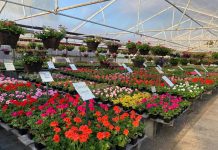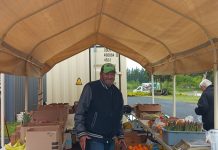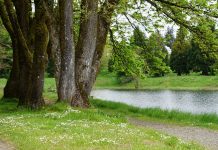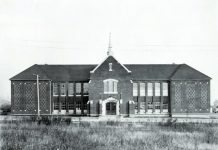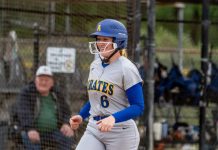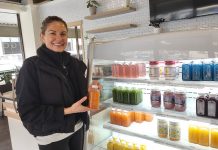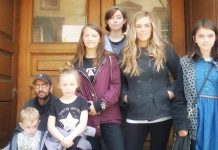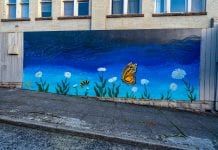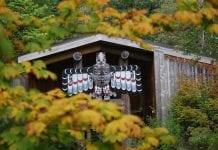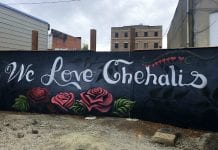Submitted by Chehalis Lead Entity
Spend a few minutes talking with Kenna Fosnacht and you quickly understand her passion for science, the outdoors, her local community, and her work as a Resource Technician with the Lewis Conservation District (LCD).
Scatter Creek and Project Science

Kenna is the third generation of her family to grow up alongside Scatter Creek, a Coho salmon rearing and spawning tributary to the Chehalis River. “I spent much of my childhood outside, along the creek flipping over rocks to look for crawdads and watching for salmon. I always wore my fanny pack tool kit; it held my hand magnifier and notebook.”
Kenna got really involved with science in her Chehalis Project Science class at Rochester Middle School. “I remember that the class was so much fun, and I got my first taste of fieldwork as we conducted water quality testing at several locations on the Black River,” said Kenna. “Along with the fact that all my friends were in the class, this sparked my interest in science.”
While at Rochester High School, Kenna cultivated her interest in agriculture by growing plants in greenhouses and developed an interest in animal husbandry. Kenna also recalled an environmental activity that made a huge impact on her. “One week we collected all of the garbage that would have been thrown away by students,” she said. “We put on these Tyvek suits to sort through the garbage. I did not know how much single-use plastic is used in a day! Until then, it had always been ‘out of sight, out of mind’ so I didn’t have to see or think about again.”
St. Martins, Science and Fieldwork

After high school, Kenna went to St. Martins University to continue to study science and investigate environmental issues and to run track and cross country. “I fell in love with college and really enjoyed the ecology and marine biology classes and being able to apply ecology principles in the field,” she said. “For my senior thesis, I looked at the presence of microplastics in manila clams, since they are low on the food chain and indicate how much of a problem this might be to lots of species. I wanted to understand the density of microplastics in the clams and its correlation to human population density. Through my research, I found that the presence of microplastics in the manila clams was another example of ‘out of sight, out of mind.’”
Kenna was active with SMU’s Biology club, which held workshops for Boys and Girls Clubs, including for her hometown of Rochester’s club. “The students joined me in conducting water quality monitoring of the water from Woodland Creek,” says Kenna. “I wanted the kids to have the same opportunities that I had growing up, and to help them foster a love of science.”
Kenna also volunteered with the non-profit Nisqually Reach Nature Center. There, Kenna helped with science camps, beach seines, and with forage fish surveys to better understand this important salmon food source. “These volunteer experiences opened my eyes to interesting people, local science, and to lab work,” she recalls. “Looking for forage fish eggs in the intertidal gravels was like gold panning. I still remember the day that after two years of searching in the lab, I finally found forage fish eggs. I was pretty excited.”
Perseverance — and Passion for Science and Her Local Community

In 2017, Kenna graduated from St. Martins with a B.S. degree in biology. She immediately applied for an opening with the LCD. “I didn’t get the job, so I gained more field experience in a position with the Bureau of Lands Management… Two years later, I reapplied and was hired by the LCD as a Resource Technician,” she said.
“I found a job in my local community that combines my love of working with people and my passion for fieldwork,” shares Kenna. “Half of my time, I work as a farm planner and make site visits and work with farmers to understand their goals. As an educator, and not as a regulator, I ask farmers: “what can I do to help?” I then develop and tailor farm plans and recommend practices that benefit wildlife, soil, water, and farming activities. I get to help people with their farming practices while also helping to protect the environment.”
The second half of Kenna’s job is with the Voluntary Stewardship Program. This program is managed through the Washington State Conservation Commission and is a result of the Growth Management Act of 2011. According to Kenna, “essentially, through this program, we work to identify and help protect critical areas such as wetlands, aquifer recharge areas, and wildlife habitat while promoting agricultural viability.”
In her position as a Resource Technician, Kenna shared, “I really enjoy getting to know our local farmers. I love to help and can provide any size farm – from a dairy farm to a small hobby farm – with technical conservation assistance. I can be reached via email at Kenna.fosnacht@lewiscdwa.com or by phone at (360) 996-4560.”



